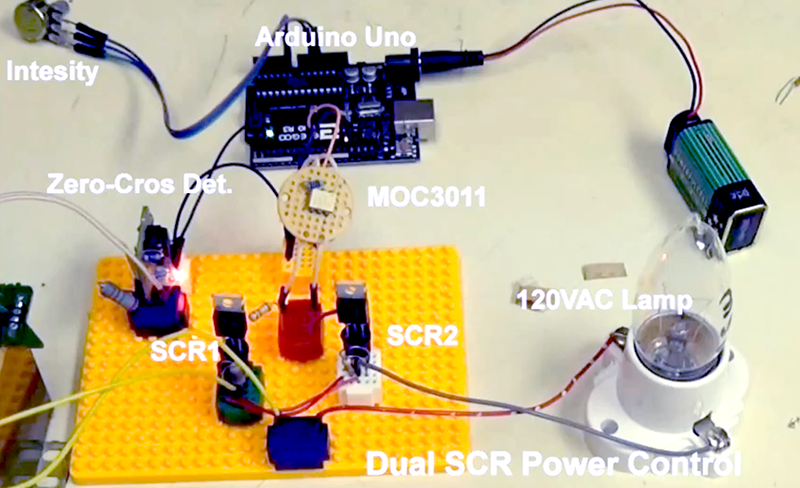Although the silicon controlled rectifier or SCR has been around since 1957, it doesn’t get nearly the love an ordinary transistor does. That’s a shame because they are quite handy when it comes to controlling AC and DC voltages in things such as lamp dimmers, motor speed controllers, and even soldering iron temperature controllers. [Lewis Loflin] has a short video introduction that will help you get started with these devices.
One of the interesting properties of the device is that once you turn it on it will stay on until you do something specific to turn it back off — sort of, [Lewis] explains it in the video.
The video also has some practical advice for prototyping with cheap devices. He also talks about SCR optocouplers and there are some that are light sensitive, as well. You often hear these devices mentioned along with TRIACs, a TRIAC is very similar but unlike the SCR it can pass current in both directions once it turns on. It’s a surprise to learn that SCR is a specific trade name for the device which is technically a type of thyristor. We always think that the terms are synonymous, but some people think that all SCRs are thyristors but not all thyristors are SCRs.
We’ve seen SCRs at the heart of coil guns. They can also help with high-speed flash photography.
















One interesting characteristic of SCRs is that, even though they are four-layer devices where bipolar transistors are three-layer, due to the serious overdrive the device provides to itself when in the “on” state, its forward conduction drop is lower than that of a fully-saturated transistor. Very handy if you’re handling high currents, because less heat is generated.
I think that’s a mistake.
A fully saturated transistor has a CE voltage of much less than the around 0,7V of a BE junction, can be less than 50mV.
An SCR has always a higher AK voltage than 0,7V often up to 1V or more. Think of it as a saturated transistor in series with the BE junction of the complimentary transistor.
An SCR is often quite slow in turn off. It’s only advantage is it’s capability to carry huge currents at high voltages, several kV and 1000Amps. Electric train engines and power station or substation current converters in the MW or multi MW power range.
For me SCR and Triac devices have fallen out of favour because of the switching noise they create. It is incredibly hard to meet the conduction emissions requirements for a mains powered circuit that uses an SCR without very large high current filters which are bulky and expensive.
Zero cross switching generates little noise.
Isn’t that only the case when switching linear loads?
Or was it that inductive/capacitive loads are hell on SCRs (or even TRIACs in general?), but do not create additional noise?
Don’t forget the supercon talk on thyristors: https://youtu.be/BsLqAIWDd-4
Isn’t that only the case when switching linear loads?
Or was it that inductive/capacitive loads are hell on SCRs (or even TRIACs in general?), but do not create additional noise?
^^ that comment landed in the wrong place…. delete it and this one if you can.